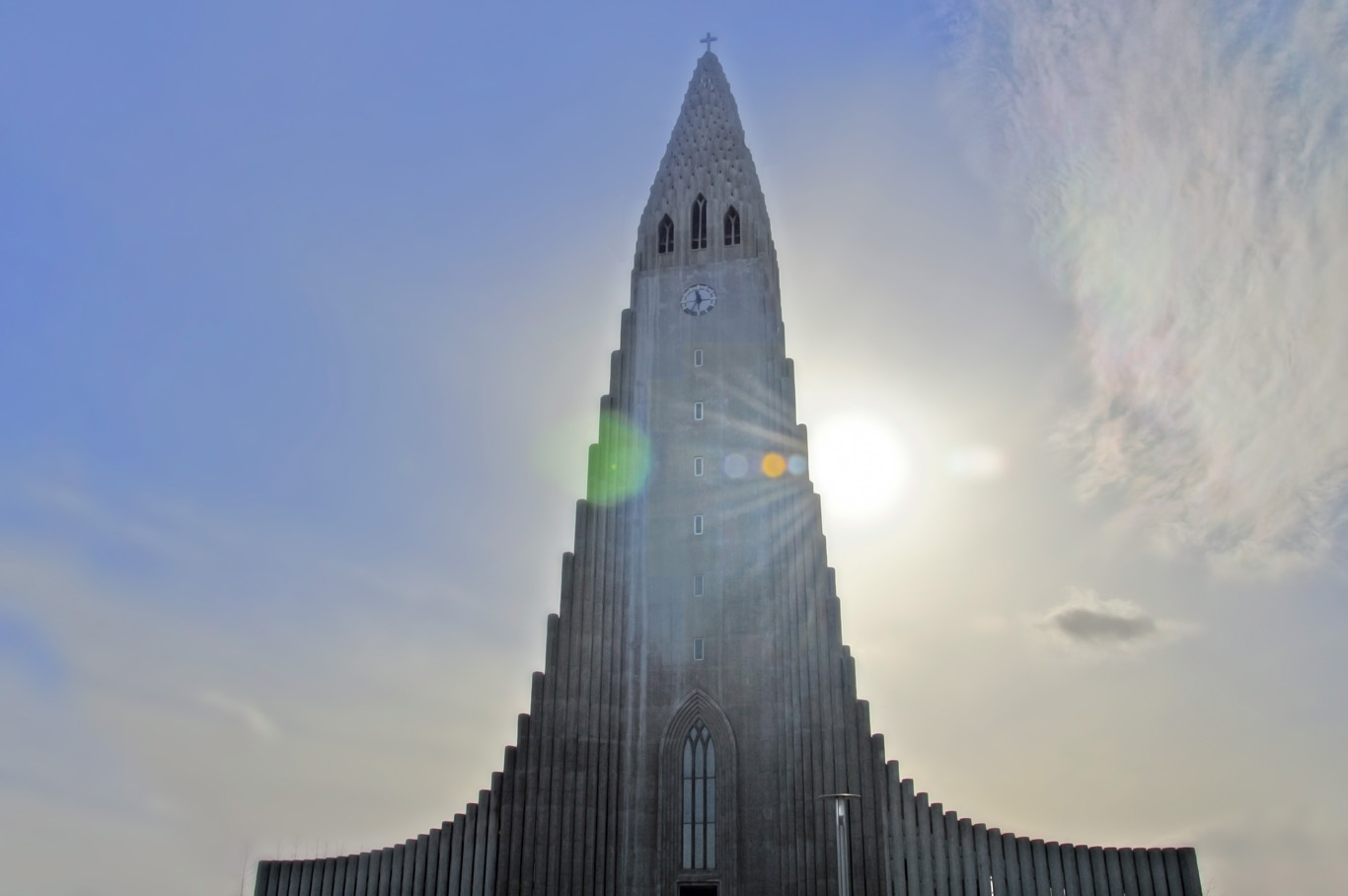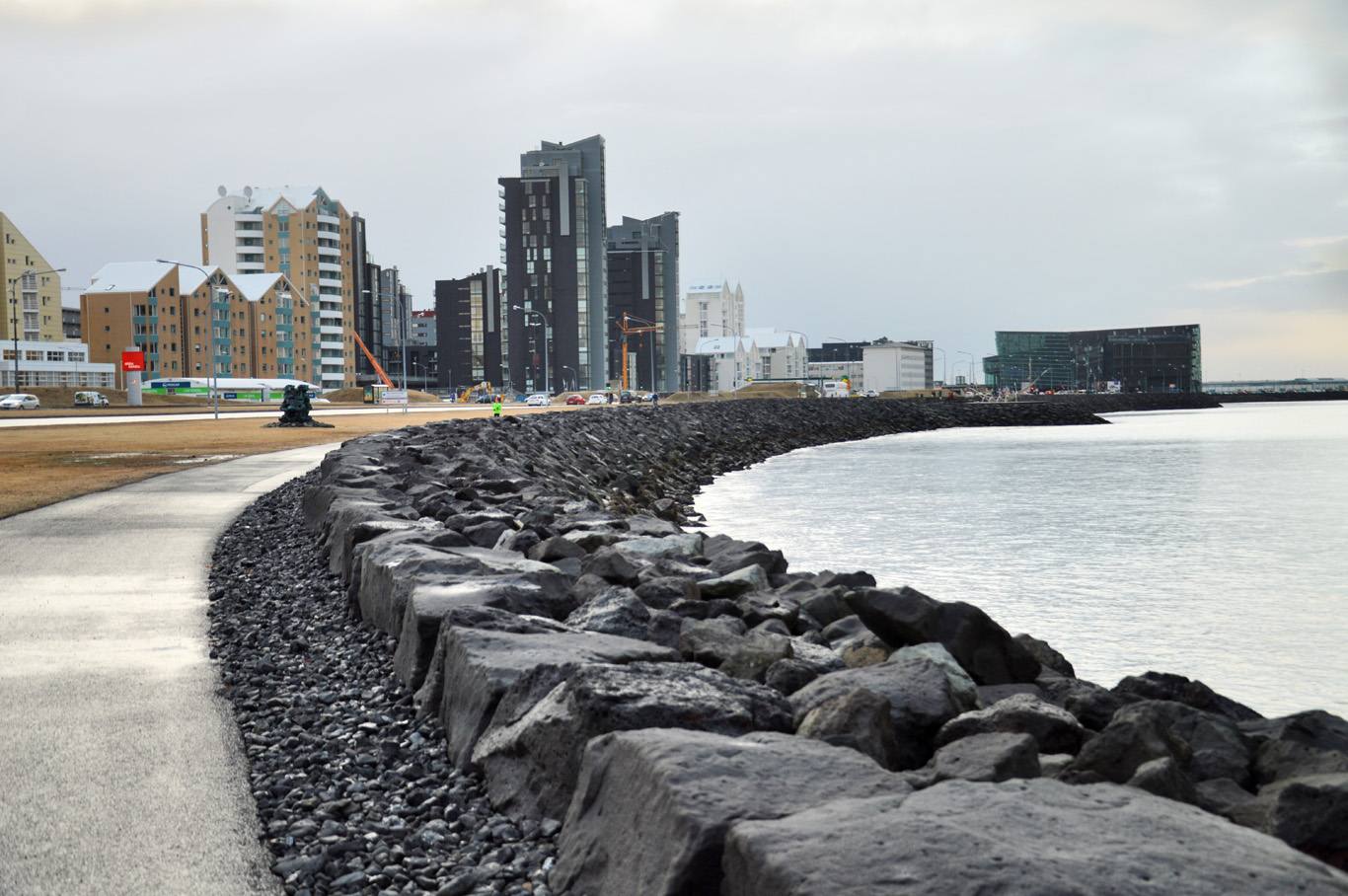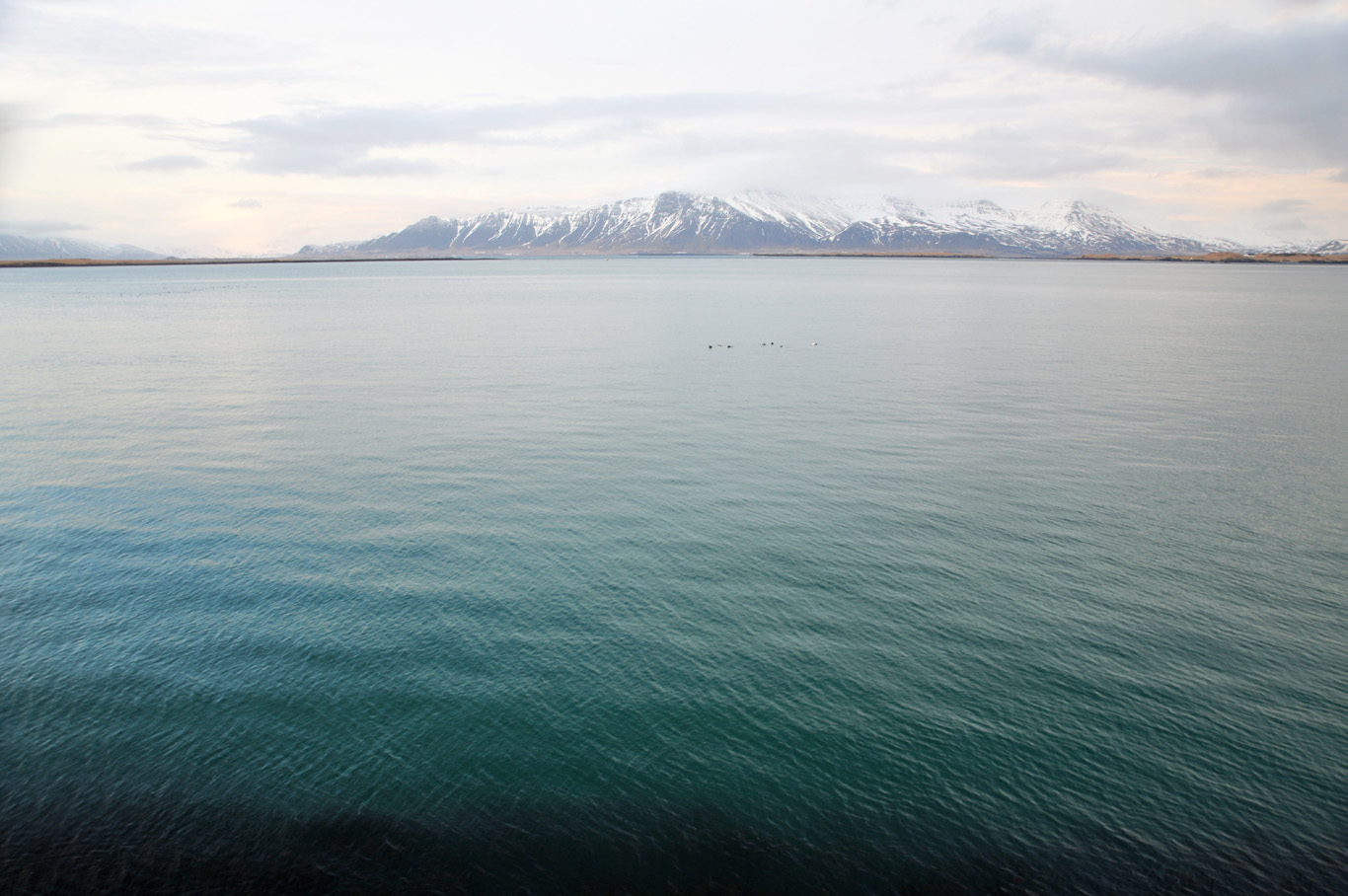Visitors who come to Iceland, surely don't travel to this outlandish, eerie island in order to see its capital city. They want to venture out towards the unknown, barren volcanic landscapes, experience either spectacular Northern Lights in winter or the "midnight sun" in summer, hike one of the famous glaciers, admire stunning waterfalls, relax in hot, milky blue waters of world's most peculiar geothermal spa - the Blue Lagoon, witness the geyser shooting boiling stream of water high up in the air, take a stroll on one of the unique, black beaches surrounded by basalt columns (just like at Giant's Causeway in Ireland). However, Reykjavik, in its own, unique way, is also a very interesting city to see.
What to see in Reykjavik
Walking around Reykjavik City Center
Downtown Reykjavik is small and easy to walk around. You can admire the typical of Nordic countries, colorful wooden houses, cozy streets and some of the important sights of the city. Let's begin our tour from something different and not traditional - right at the start of the waterfront promenade (called Sculpture and Shore Walk) - you'll see a spectacular, extremely modern construction with thousands of windows reflecting light, especially beautifully illuminated at night - Harpa Concert Hall which held its first concert in 2011.
If you continue down south Laekjargata Street, you'll see a city lake (Reykjavíkurtjörn) full of swans and the modern structure of the City Hall. Following further down south - Fríkirkjuvegur and Sóleyargata street, you'll reach another original building - The Perlan. (The walk all the way from Harpa Concert Hall to Perlan takes around 30 minutes). There is a restaurant and a viewing platform which offers beautiful views over Reykjavik center. The strange construction was built on water tanks that hold the city's hot geothermal water. In Reykjavik, the heating system and hot water is obtained by the processes occurring underground - you can easily sense a characteristic smell while taking a hot shower!
Now, on the way back to the waterfront, take Njarðargata street and in around 10-15 minutes you'll reach Reykjavik's most famous landmark - Hallgrímskirkja church, founded in 1945. Its design resembles the lava pillars that can be found on some beaches in Iceland (most spectacular is the Reynisfjara beach - I'll describe it in the future).
The Waterfront
Now, from Hallgrímskirkja church continue back north towards the sea. Follow Frakkastígur street and in around another 15 minutes, you'll find yourself right in front of the Sun Voyager, a sculpture made of steel, in the shape of a boat. There, you'll enjoy the beautiful view of Mount Esja and North Atlantic Ocean. There is a long cycle and pedestrian path along the shore - from here, you can also see the different, modern part of the city. Follow it to the east - in the opposite direction from the Harpa Concert Hall - you'll get to Höfði House - an important building in Icelandic history where tho presidents of world's most powerful countries met in 1986 - the US president Ronald Reagan USSR Secretary General Mikhail Gorbachev.
Although Reykjavik is the capital city, it has the feeling of a small, quiet town. It's extremely well maintained, clean and safe. It's probably the safest capital in all Europe.
Take a walk along the waterfront at night! If you're lucky, you will be able to spot the Northern Lights! They won't appear as spectacular as outside of the city (due to light pollution), but still - worth seeing, it's an experience one of a kind! I really enjoyed it!
Harpa Concert Hall
The city hall and Reykjavíkurtjörn lake
The Perlan
Statues in front of Perlan
Reykjavik from the dome - viewing platform of Perlan
With the view of Reykjavik
View from Perlan
HDR photo of Hallgrímskirkja church
Hallgrímskirkja church inside
Hallgrímskirkja church
Downtown Reykjavik
Downtown Reykjavik
Original fountain
At the waterfront
Sun Voyager at night
The waterfront
View from the waterfront
Northern lights spotted near the Sun Voyager sculpture
Höfði House
Modern Reykjavik
Boats at Reykjavik Harbor
Sunset at the waterfront
Around Reykjavik
To see all of the mentioned above things, it's enough to walk. But there are a few attractions worth visiting which are not in the strict city center. For example, the fishing town Hafnarfjörður (12 km/7.5 miles from Reykjavik), where the 'hidden people - elves' and normal humans lived together, according to local legends. Many Icelandic gardens have tiny houses, for those little creatures to take shelter in. Some of Icelanders even built churches to convert them to Christianity!
Another place worth seeing is the presidential residence area at Bessastaðir. First inhabitants settled in Bessastaðir over 1000 years ago. The buildings that we can see today date back to the 18th century - now it is the residence of the president of Iceland. What's striking about the site is that it seems so far away from any town or city. It looks like the few building just appeared there from nowhere - but it's a typical sight in Iceland! The feeling of remoteness is with you everywhere you go.
Is Reykjavik expensive? Getting around Reykjavik
Reykjavik is pricey, but not as expensive as let's say Oslo, Norway. You can find accommodation in a hostel for around 20 EUR (22 USD). The food is also cheaper - you can buy a simple meal for around 7 EUR (8 USD).
If you're on a budget, have at least 2 days to spend in Reykjavik and love a lot of walking, do the walking tour on the first day and use the public bus to go around on the second. You'll find all the timetables and information on the official website of Iceland Public Bus. So, in order to visit the Icelandic capital you don't have to buy any tours - you can do it yourself. However if you're short of time, you'll be able to visit all the places I've mentioned here with Grey Line Tours - for a great price of 38 EUR. You can also combine the city sightseeing tour with other tours - for example Blue Lagoon or Golden Circle. Their office is located beside the Harpa Concert Hall.
Geothermal Swimming Pools
Of course, nothing can compare to Blue Lagoon, but after a tiring day of walking and visiting all the attractions you might want to relax - and take a swim at one of the geothermal swimming pools. The sensation is similar to the one at Blue Lagoon - especially in winter when you have to walk outside only in your swimwear and then immerse yourself in hot waters. At Laugardalslaug, you have multiple hot pools to choose from - with different temperatures. And the entry fee is many times lower than at Blue Lagoon, only around 600 ISK (5 EUR/6 USD).
Laugardalslaug is located near the city center, 3 km (nearly 2 miles - 40 minute walk) along the beautiful waterfront from the Harpa Concert Hall.
Hafnarfjörður fishing town
Typical houses around Reykjavik
Houses around Reykjavik
Bessastaðir presidential residence
Bessastaðir presidential residence
Bessastaðir presidential residence
Reykjavik seen from Bessastaðir
Reykjavik at night
Harpa Concert Hall
Outside Reykjavik
Chasing the Northern Lights
The northern lights is a breathtaking natural phenomenon that everyone who visits Iceland must experience! It can be tricky though, because of the capricious weather and the strength of solar wind. Sometimes you might miss it due to a thick cloud cover, other times the skies might be clear and you wait in vain staring at the night sky for hours and... nothing. I went through those both disappointing scenarios, but finally at the third time I got lucky and had a chance to experience the spectacle of Northern Lights. If you wonder what's the best way to see it and how to photograph it - I've described it all in my post about Northern Lights.
Blue Lagoon
Swimming in Blue Lagoon Geothermal Spa is a truly unique and out of this world experience. I would recommend to visit it in winter, when the temperature outside is below freezing and you can enjoy relaxing in hot blue waters while it's snowing on your head! The only disadvantage is the price - but anyway it's worth it! For more info and photos, see "Related Posts" below.
Whale watching
Whale watching is a popular activity in Reykjavik. I did one tour in March - between winter and summer and must say that I was pretty disappointed. Besides a few dolphins, we managed to spot maybe two whales, however so far from the boat that only a tiny part of the tail was visible for a split second. The guide however, claimed it was a great day, and that the sea was "full of life". I'm not sure if he was for real or he just wanted to comfort us. Nevertheless, the whales that we saw were nothing like in the the photos that advertised the tour. Maybe in the summer it's better - if you've done any whale watching tours - let me know how they went in the comment section below!
Whale watching - we only spotted dolphins
The Golden Circle
One of the most popular tours from Reykjavik, also provided by Grey Line: Visit beautiful Þingvellir National Park where the continental drift between Europe and North America can be clearly visible in the cracks, canyons and gorges on the surface. Later, you'll have a chance to see the spectacular waterfall - Gullfoss and the Geysir Geothermal Area with geysers shooting water high up. Then, you'll see the ancient seat of Icelandic Bishops and experience how the geothermal, power plant - Hellisheiði works. Check "Related Posts" below for more information and photos.
The South Coast, Waterfalls and Glacier Hike
This tour is also quite popular - within one day you'll be able to visit most of the things you'd love to see in Iceland. See the details here. Among others: breathtaking black beaches with basalt columns, magnificent waterfalls (full of beautiful rainbows - if you're lucky with the weather) - especially Seljalandsfoss waterfall which you can also admire from "inside". The tour ends with an amazing walk on the Sólheimajökull glacier - with the equipment a guide included. I will describe all the interesting points of The South Coast Tour in the future. Check "Related Posts" below for more info.
If you liked this article, you can also download it via the GPSmyCity app - you will be able to gain access to the guide, which will direct you to all the attractions described above, even if you're offline. Download it here.
Related Posts
Copying without permission is not allowed. If you wish to use any of the site's content (photos or text) or work with us, please contact us.
We welcome questions, advice, support or criticism. However, spam comments will be removed.







































